 W
WHenry Hugh Armstead was an English sculptor and illustrator, influenced by the Pre-Raphaelites.
 W
WEdward La Trobe Bateman was a Pre-Raphaelite watercolour painter, book illuminator, draughtsman and garden designer.
 W
WGeorge Price Boyce was a British watercolour painter of landscapes and vernacular architecture in the Pre-Raphaelite style. He was a patron and friend of Dante Gabriel Rossetti.
 W
WJoanna Mary Boyce was a British painter associated with the Pre-Raphaelite Brotherhood. She is also known by her married name as Mrs. H.T. Wells, or as Joanna Mary Wells. She produced multiple works with historical themes, as well as portraits and sketches, and authored art criticism responding to her contemporaries. She was the sister of Pre-Raphaelite watercolourist George Price Boyce.
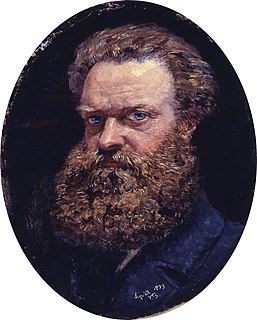 W
WJohn Brett was an artist associated with the Pre-Raphaelite movement, mainly notable for his highly detailed landscapes.
 W
WRosa Brett, was a Pre-Raphaelite painter and sister of landscape artist John Brett. Their mother was Ann Brett and their father was an army surgeon, Captain Charles Curtis Brett (1789–1865). Rosa grew up in Dublin, but was known to travel on the continent, spending 1854–55 in Belgium for her health.
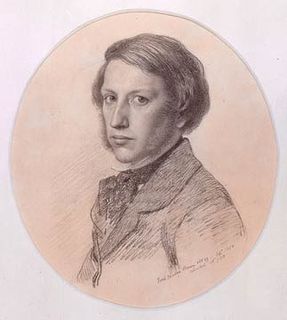 W
WFord Madox Brown was a British painter of moral and historical subjects, notable for his distinctively graphic and often Hogarthian version of the Pre-Raphaelite style. Arguably, his most notable painting was Work (1852–1865). Brown spent the latter years of his life painting the twelve works known as The Manchester Murals, depicting Mancunian history, for Manchester Town Hall.
 W
WRichard Burchett (1815–1875) was a British artist and educator on the fringes of the Pre-Raphaelite movement, who was for over twenty years the Headmaster of what later became the Royal College of Art.
 W
WSir Edward Coley Burne-Jones, 1st Baronet, was a British artist and designer associated with the phase of the Pre-Raphaelite movement, who worked with William Morris on decorative arts as a founding partner in Morris, Marshall, Faulkner & Co.
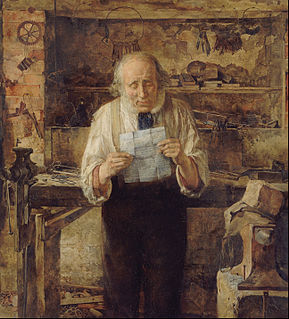 W
WJames Campbell was an English artist, part of a group from Liverpool, who were influenced by the Pre-Raphaelite style. He studied briefly at the Liverpool Academy and then moved on to the Royal Academy Schools in 1851.
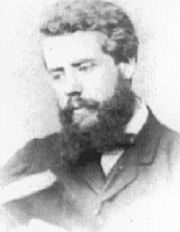 W
WJohn Mulcaster Carrick was a British painter, etcher and illustrator. He painted in the Pre-Raphaelite style.
 W
WJohn Maler Collier OBE RP ROI was a leading English painter and writer. He painted in the Pre-Raphaelite style, and was one of the most prominent portrait painters of his generation. Both his marriages were to daughters of Thomas Henry Huxley. He studied painting at the Munich Academy starting in 1875.
 W
WCharles Allston Collins was a British painter, writer, and illustrator associated with the Pre-Raphaelite Brotherhood.
 W
WJames Collinson was a Victorian painter who was a member of the Pre-Raphaelite Brotherhood from 1848 to 1850.
 W
WWilliam Davis (1812–1873) was an Irish artist, and part of a group of Liverpool based artists who were influenced by the Pre-Raphaelite style of painting.
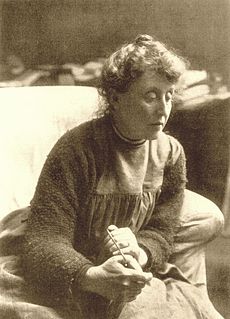 W
WEvelyn De Morgan, née Pickering, was an English painter associated early in her career with the later phase of the Pre-Raphaelite Movement. Her paintings are figural, foregrounding the female body through the use of spiritual, mythological, and allegorical themes. They rely on a range of metaphors to express what several scholars have identified as spiritualist and feminist content. She boycotted the Royal Academy and signed the Declaration in Favour of Women's Suffrage in 1889. Her later works also deal with the themes of war from a pacifist perspective, engaging with conflicts like the Second Boer War and World War I.
 W
WWalter Howell Deverell (1827–1854) was a United States-born British artist, closely associated with the Pre-Raphaelite Brotherhood.
 W
WJohn Duncan (1866–1945) was a Scottish painter.
 W
WHenry Treffry Dunn (1838–1899) was Dante Gabriel Rossetti's assistant and a painter in his own right. Dunn's memoirs are a valuable source for the lives of the Pre-Raphaelites. He was paid to be Rossetti's factotum and to create copies of Rossetti's paintings. It has been said that the painting Lady Lilith in the Metropolitan Museum of Art was actually painted by Dunn and only "touched up" by Rossetti.
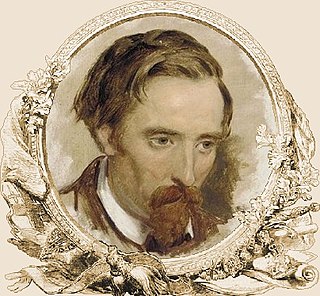 W
WWilliam Gale (1823–1909) was a British painter of the pre-Raphaelite school.
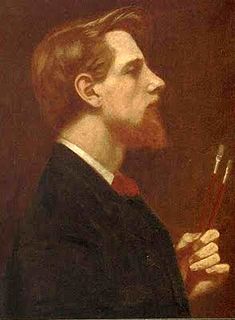 W
WThomas Cooper Gotch or T.C. Gotch (1854–1931) was an English painter and book illustrator loosely associated with the Pre-Raphaelite movement; he was the brother of John Alfred Gotch, the architect.
 W
WCharles Edward Hallé (1846–1914), sometimes given as Edward Charles Hallé, was an English painter and gallery manager. He was a painter of history scenes, genre scenes, and portraits.
 W
WJane Benham was a prominent English painter and illustrator of the Victorian period. She was associated with two important artistic movements of the mid-19th century: the Pre-Raphaelite painters of Britain and the Macchiaioli of Italy.
 W
WWilliam Brassey Hole RSA was an English artist, illustrator, etcher and engraver, known for his industrial, historical and biblical scenes.
 W
WHenry Holiday was a British historical genre and landscape painter, stained-glass designer, illustrator and sculptor. He is part of the Pre-Raphaelite school of art.
 W
WArthur Hughes was an English painter and illustrator associated with the Pre-Raphaelite Brotherhood.
 W
WWilliam Holman Hunt was an English painter and one of the founders of the Pre-Raphaelite Brotherhood. His paintings were notable for their great attention to detail, vivid colour, and elaborate symbolism. These features were influenced by the writings of John Ruskin and Thomas Carlyle, according to whom the world itself should be read as a system of visual signs. For Hunt it was the duty of the artist to reveal the correspondence between sign and fact. Of all the members of the Pre-Raphaelite Brotherhood, Hunt remained most true to their ideals throughout his career. He was always keen to maximise the popular appeal and public visibility of his works.
 W
WJohn Lee was a pre-Raphaelite British painter; part of a group of Merseyside artists from the period which also included William Lindsay Windus and William Davis. The son of Liverpool merchants, he lived in Rock Ferry before moving to London in 1866. His works were shown at the Liverpool Academy from 1859–1867 and at the Royal Academy from 1863–1867. However, little else is known of his life, and only four paintings have been attributed to him with any certainty.
 W
WFrederic Leighton, 1st Baron Leighton,, known as Sir Frederic Leighton between 1878 and 1896, was a British painter, draughtsman and sculptor. His works depicted historical, biblical, and classical subject matter in an academic style. His paintings were enormously popular, and expensive, during his lifetime, but fell out of critical favour for many decades in the early 20th century.
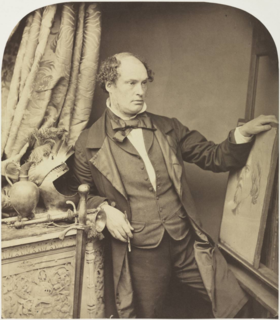 W
WDaniel Maclise was an Irish historian painter, literary and portrait painter, and illustrator, who worked for most of his life in London, England.
 W
WRobert Braithwaite Martineau was an English painter.
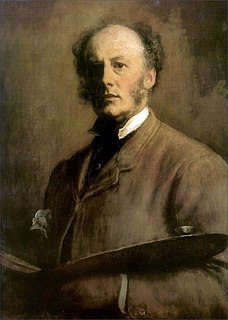 W
WSir John Everett Millais, 1st Baronet, was an English painter and illustrator who was one of the founders of the Pre-Raphaelite Brotherhood. He was a child prodigy who, aged eleven, became the youngest student to enter the Royal Academy Schools. The Pre-Raphaelite Brotherhood was founded at his family home in London, at 83 Gower Street. Millais became the most famous exponent of the style, his painting Christ in the House of His Parents (1849-50) generating considerable controversy, and he produced a picture that could serve as the embodiment of the historical and naturalist focus of the group, Ophelia, in 1851–52.
 W
WCharles William Mitchell (1854–1903) was an English Pre-Raphaelite painter from Newcastle. A contemporary of John William Waterhouse, his work is similar in many ways. His one famous piece was Hypatia, shown in 1885 and likely inspired by the Charles Kingsley serialized novel Hypatia, or New Foes with an Old Face. This painting is currently in the Laing Art Gallery.
 W
WCharles Herbert Moore was an American university professor, painter, and architectural historian, known as the first director of Harvard University's Fogg Art Museum. He was one of many followers of the works of John Ruskin, and was known as an American Pre-Raphaelite. In 1871, Moore left painting to begin teaching at Harvard, where he led its new art department. There Moore was among the first art historians at an academic institution in the United States. After retirement, Moore moved to Hampshire, England. He wrote many books on medieval and Renaissance architecture there, and died in Hampshire in 1930.
 W
WValentine Cameron "Val" Prinsep was a British painter of the Pre-Raphaelite school.
 W
WHenry Meynell Rheam was a painter from England.
 W
WGabriel Charles Dante Rossetti, generally known as Dante Gabriel Rossetti, was an English poet, illustrator, painter and translator, and member of the Rossetti family. He founded the Pre-Raphaelite Brotherhood in 1848 with William Holman Hunt and John Everett Millais. Rossetti was later to be the main inspiration for a second generation of artists and writers influenced by the movement, most notably William Morris and Edward Burne-Jones. His work also influenced the European Symbolists and was a major precursor of the Aesthetic movement.
 W
WEmma Sandys was a 19th-century English Pre-Raphaelite painter.
 W
WAnthony Frederick Augustus Sandys, usually known as Frederick Sandys, was a British painter, illustrator and draughtsman, associated with the Pre-Raphaelites. He was also associated with the Norwich School of painters.
 W
WHerbert Gustave Schmalz, known as Herbert Carmichael after 1918 was an English painter. He is counted among the Pre-Raphaelites.
 W
WFrederic James Shields was a British artist, illustrator and designer closely associated with the Pre-Raphaelites through Dante Gabriel Rossetti and Ford Madox Brown.
 W
WElizabeth Eleanor Siddall, styled and commonly known as Lizzie, was an English artist, poet, and artists' model. Siddall was an important and influential artist and poet. Significant collections of her artworks can be found at Wightwick Manor and the Ashmolean. Siddall was painted and drawn extensively by artists of the Pre-Raphaelite Brotherhood, including Walter Deverell, William Holman Hunt, John Everett Millais, and her husband, Dante Gabriel Rossetti.
 W
WSimeon Solomon was a British painter associated with the Pre-Raphaelites who was noted for his depictions of Jewish life and same-sex desire. His career was cut short following arrests and convictions for sodomy in 1873 and 1874.
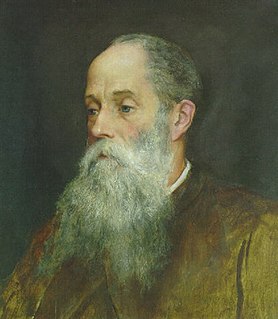 W
WJohn Roddam Spencer Stanhope was an English artist associated with Edward Burne-Jones and George Frederic Watts and often regarded as a second-wave pre-Raphaelite. His work is also studied within the context of Aestheticism and British Symbolism. As a painter, Stanhope worked in oil, watercolor, fresco, and mixed media. His subject matter was mythological, allegorical, biblical, and contemporary. Stanhope was born in Yorkshire, England, and died in Florence, Italy. He was the uncle and teacher of the painter Evelyn De Morgan.
 W
WMarie Euphrosyne Spartali, later Stillman, was a British member of the second generation of the Pre-Raphaelite Brotherhood. Of the Pre-Raphaelites, she had one of the longest-running careers, spanning sixty years and producing over one hundred and fifty works. Though her work with the Brotherhood began as a favorite model, she soon trained and became a respected painter, earning praise from Dante Gabriel Rossetti and others.
 W
WJohn Melhuish Strudwick, was an English Pre-Raphaelite painter, the son of William Strudwick (1808–1861) and Sarah Melhuish (1800–1862).
 W
WWilliam Cave Thomas, generally referred to as Cave Thomas was an English painter of historical, religious and literary subjects, also known as a sculptor and author.
 W
WPauline, Lady Trevelyan was an English painter, noted for single-handedly making Wallington Hall in Northumberland a centre of High Victorian cultural life, and for enchanting by her intellect and art John Ruskin, Swinburne, Elizabeth Barrett Browning, Robert Browning, Christina Rossetti, Dante Gabriel Rossetti, William Michael Rossetti, Thomas Carlyle, John Everett Millais, and other members of the Pre-Raphaelite Brotherhood. She was married in May 1835 to Sir Walter Calverley Trevelyan, 6th Baronet.
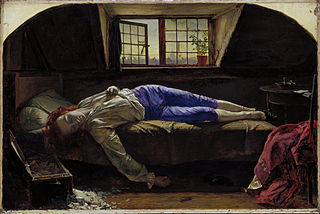 W
WHenry Wallis was a British Pre-Raphaelite painter, writer and collector.
 W
WLouisa Anne Beresford, Marchioness of Waterford was a Pre-Raphaelite watercolourist and philanthropist.
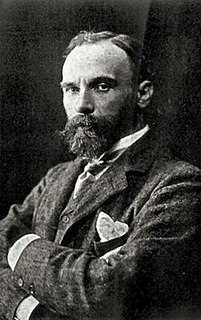 W
WJohn William Waterhouse was an English painter known for working first in the Academic style and for then embracing the Pre-Raphaelite Brotherhood's style and subject matter. His artworks were known for their depictions of women from both ancient Greek mythology and Arthurian legend.
 W
WWilliam Lindsay Windus (1822–1907) was an English painter, part of a group of Liverpool painters who were influenced by the Pre-Raphaelite style.
 W
WMaria Zambaco, born Marie Terpsithea Cassavetti, was a British artist and model of Greek descent. She was favoured by the Pre-Raphaelites.